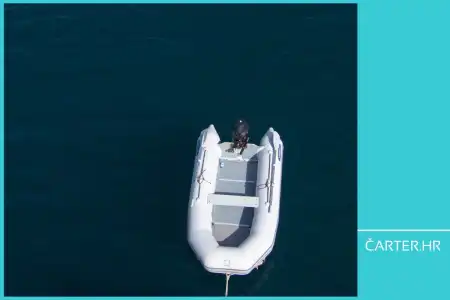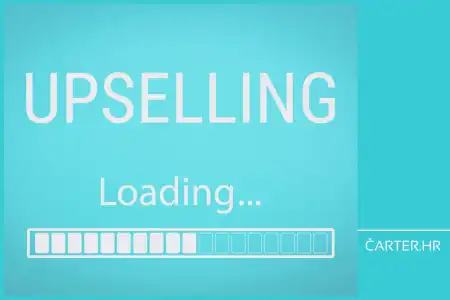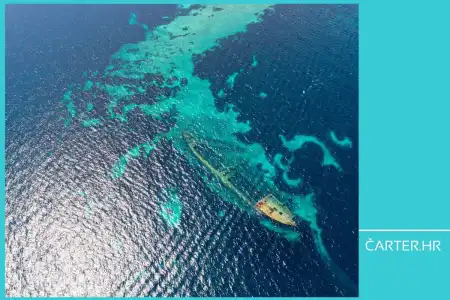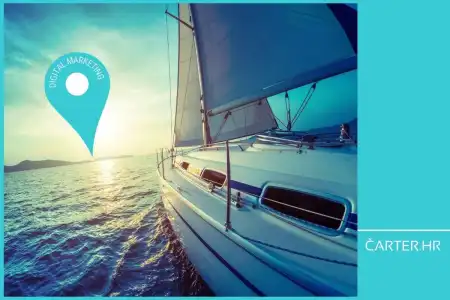
- 24.03.2025.
- News, Marketing, Web design
Make the most of your website. After all, why do you have it? Not just because you think you need one or to showcase pictures of your sailboats, catamarans, and other vessels... A website can attract potential guests and generate inquiries. These inquiries are yours alone – you don’t have to share the profit with anyone.
If your website is not attracting enough visitors or converting them into inquiries, you are missing opportunities that your competitors are surely taking advantage of. And you’re not using the primary function of a website – attracting potential guests.
That’s why website optimization is essential, as it can directly impact the number of bookings and your revenue.
Modern guests make decisions quickly.
If your website isn’t fast, intuitive, and informative, potential guests will leave before they even check out your fleet. Besides being visually appealing, your website must also be functional, easy to use, and visible on search engines.
7 most common problems yacht charter websites have:
- They load slowly
- Their design is outdated
- You’re not where your guests are searching
- Descriptions are imprecise, and boat photos are not good
- There is a lack of clear calls to action (CTA)
- You don’t have social proof
- You don’t track results or optimize them
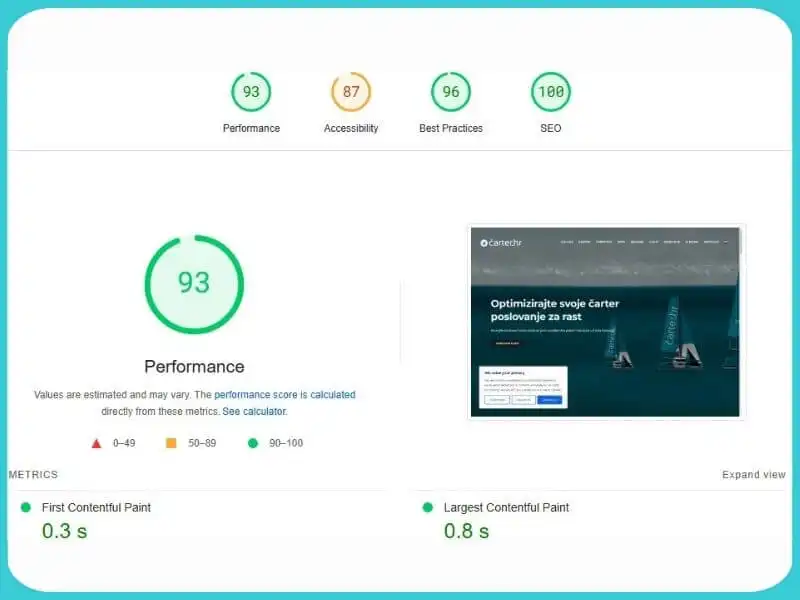
1. Loading speed – the first test of trust
No one likes to wait. If your website takes more than three seconds to load, 40% of visitors will give up and go elsewhere. This means fewer views, fewer conversions, and a poorer impression of your brand.
Google also favors faster websites, which means that a slow website reduces both conversions and organic visibility.
How to improve loading speed:
- Optimize images – Use tools like TinyPNG or ShortPixel to reduce image size without losing quality.
- Use caching – Enable caching so that the website loads faster for returning visitors. This can be set up through plugins.
- Remove unnecessary add-ons – Plugins and scripts you don’t use can slow down the website.
- Choose fast hosting – High-speed hosting with SSD drives and optimized servers can significantly speed up page loading. If you are unsure which hosting to choose, consult a digital marketing agency or web experts who can recommend the best option for your needs.
If you cannot improve your website speed on your own, hire a web developer, digital agency, or freelancer as a quick and cost-effective solution.
Test your speed using PageSpeed Insights or GTmetrix, analyze the results, and take the necessary steps – either on your own or with the help of professionals.
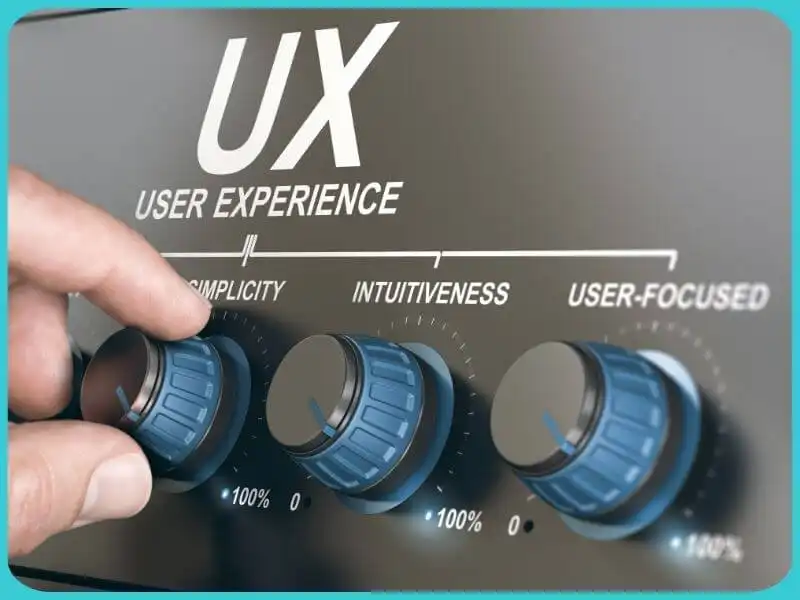
2. Design and user experience – how to keep visitors on your website
First impressions are crucial – if people don’t like your website within the first few seconds, there is a high chance they will leave and go to the competition.
Your website must not only be professionally designed with clearly structured content but also have simple navigation so that visitors can quickly find what they are looking for.
The site should not be chaotic, unattractive, or overloaded with information – the goal is simplicity, clarity, and ease of use.
Best practices for better design and user experience:
- Contrasting colors and readable fonts – Poor typography and hard-to-read text drive people away. Ensure that the text is easy to read on all devices.
- Clearly structured content – No one wants to "dig" through a site to find basic information. Use a logical layout, short paragraphs, and menus.
- Mobile optimization – More than 60% of users come from mobile devices, so your site must be optimized for smartphones and tablets.
- Less text, more visuals – Users don’t read everything; they scan the content looking for key information. Clear images, icons, and infographics can convey the message better than long texts.
- Loading speed – A slow website increases the bounce rate. Optimize images, remove unnecessary add-ons, and use fast hosting.
- Clear call to action (CTA) – Every page should have a clear goal. If you want to receive inquiries, bookings, or have potential guests contact you, make sure CTA buttons are visible.
Your website should not have dozens of subpages. The best offers should be displayed immediately, with simple search filters based on boat size, price, and location.
Good design guides users through the site and encourages them to take action. Invest in a quality user experience and watch the number of inquiries and bookings grow.
3. SEO – Appear where your guests are searching
If potential guests search for “sailboat rental in Croatia” and your website does not appear among the top results on Google, the competition surely will.
Good SEO optimization means greater visibility, more visitors to your website, and, most importantly, more bookings.
SEO (Search Engine Optimization) is not something that delivers results overnight, but in the long run, it is the most cost-effective method. The goal is for your website to be easily found when relevant terms are searched.
How to improve SEO:
- Keyword research – The first step is to discover what potential guests are searching for. Use tools like Ahrefs, SEMrush, or Google Keyword Planner to find terms with a high search volume, such as "sailing in Dalmatia," "catamaran rental Split," or " yacht charter Croatia."
- Optimized titles and descriptions – Every page and blog should have clear, attractive titles and meta descriptions that include keywords. Instead of a generic title like "Home," use something like "Sailboat and Catamaran Rental in Croatia – Book Your Boat."
- Internal linking – Link relevant pages within your website. For example, if you have a blog about the best sailing routes, include a link to your boat offerings within it.
- High-quality content – Google favors useful and original content. Blogs such as "Top 5 Sailing Routes in the Adriatic," "Catamaran Rental Guide in Croatia," or "What to Pack for a Sailing Trip?" attract visitors and increase conversion chances.
- Local SEO – If you are targeting tourists visiting specific regions, include local keywords like “boat rental Zadar” or “sailing Kornati.” Also, register your business on Google Business Profile to improve visibility in local searches.
- Backlinks – The more high-quality websites link to yours, the better Google will rank you.
SEO takes time but delivers long-term results.
It is also not a one-time activity – content needs to be regularly updated, results monitored, and strategy adjusted. If you don’t have time for this, hire an SEO expert or a digital marketing agency.
The sooner you start optimizing your website, the sooner guests will find you.
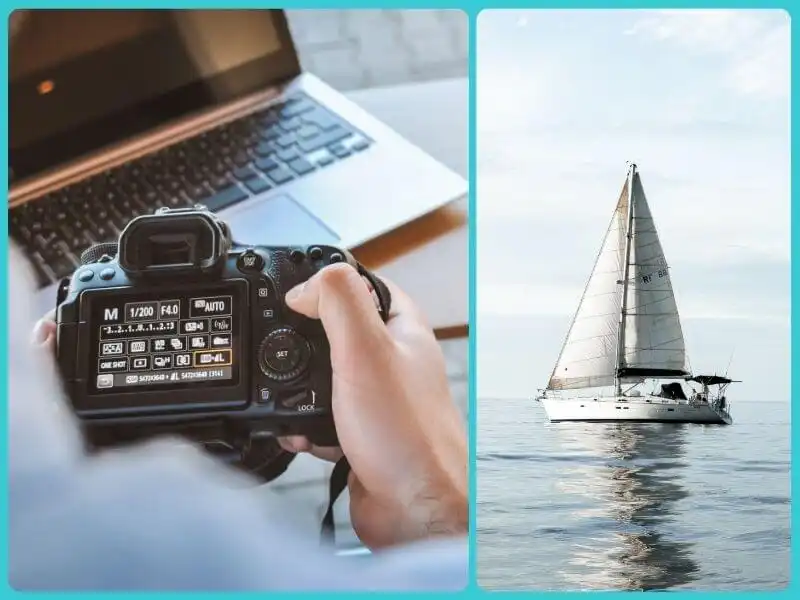
4. Photos and boat descriptions – selling an experience, not just a vessel
When potential guests browse your offer, the first thing that attracts them is the images.
Blurry, generic, or outdated photos do not create any emotion, do not spark the desire to sail, and as a result – do not generate interest.
Think of it this way – photos and descriptions are not just information; they sell the experience.
The more details you provide, the clearer the picture guests will have of the experience awaiting them.
How to enhance the visual appeal of your offer:
- Use professional photos – Good lighting and high resolution are essential. Hire a professional photographer, preferably with experience in the nautical industry. A sunny day, blue sea, and a perfectly framed shot make a huge difference.
- Show every corner of the boat – Potential guests want to see the interior, exterior, deck, cockpit, cabins, salon, bathrooms, and even details like navigation equipment or the gangway.
- Include video tours – Video is a powerful tool for building trust and engagement. A short 360° tour or drone footage of the boat in motion can showcase the space and atmosphere in a way that photos cannot.
- Add photos of the boat “in action” – Besides the usual images of the boat docked in a marina, show it anchored in a secluded bay, sailing at sunset, or guests enjoying themselves on deck (with their permission, of course). People are not just renting a boat – they want to picture themselves in that experience.
How to write boat descriptions that sell, rather than just listing technical details?
Descriptions are often overlooked, yet they are what convince a guest that a particular sailboat is the perfect choice.
Common phrases like “modern design and comfortable interior” say nothing specific. Instead, highlight unique advantages and create emotion.
- Be precise and emphasize benefits – Instead of: "A comfortable boat with modern design," write: "The Bavaria 46 Cruiser offers 4 spacious cabins, an airy salon with large panoramic windows, and a powerful 55 HP Volvo engine for a quiet and pleasant sailing experience. Ideal for family cruises along the Adriatic."
- Add details that make a difference – Instead of: "There is plenty of space on the deck," write: "A spacious deck with comfortable cushions provides the perfect spot for sunbathing and enjoying views of turquoise bays."
- Use storytelling – Instead of listing specifications, help guests imagine what their trip will look like: "Imagine waking up to the sound of waves in the spacious cabin of this luxurious catamaran. After breakfast on the sunlit deck, set sail towards hidden beaches and enjoy the privacy of the Adriatic."
People don’t book a boat, they book an experience. Photos, authentic footage, and well-crafted descriptions make a big difference.
Invest in visuals and words that sell the dream of a perfect sailing adventure.
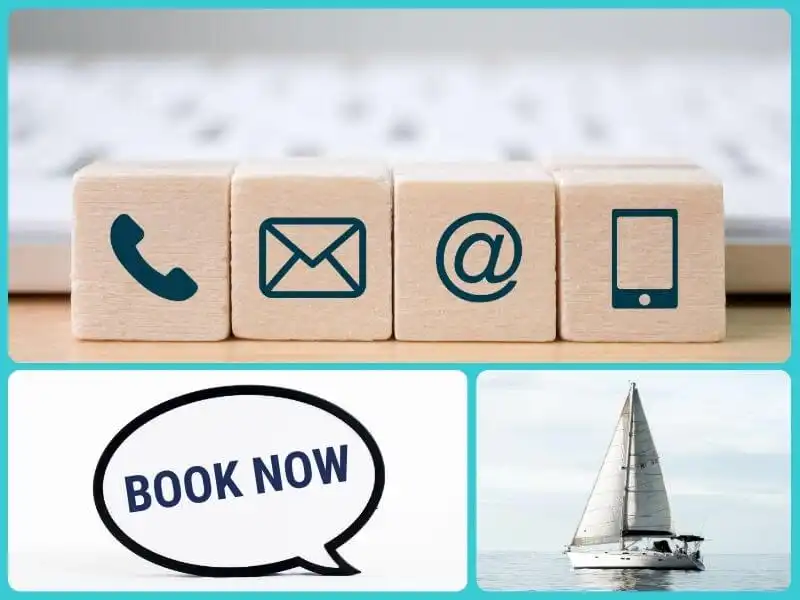
5. Contact forms and CTA – the fastest way to more inquiries
Here’s the situation: a potential guest visits your website, browses your offer, gets interested, and wants to send an inquiry – but then encounters a long, complicated contact form or cannot immediately find where to request a quote.
People want quick, simple, and clear steps for sending an inquiry or making a reservation. If they have to think too much, search for information, or fill out dozens of fields, there is a high chance they will give up.
How to optimize CTA (Call-to-Action) buttons and contact forms?
CTA buttons must be clear and appealing – Users don’t want to “learn more,” they want a specific action. Use CTA buttons that lead them to a clear goal:
- “Check availability now” – If a user can immediately see if they can book, they are more likely to take the next step.
- “Request a quote in 2 clicks” – Highlight how fast and simple the process is.
- “Book your boat now” – A direct call to action that leaves no room for hesitation.
The booking form should be as short and simple as possible. Every additional field reduces the conversion rate. The ideal form asks only for a name, email, and desired rental date. The preferred boat type or location should be selected from a dropdown menu instead of being entered manually.
- Place the form in a visible location – Do not hide it in the website footer or on a separate subpage. The form should be clearly highlighted in multiple visible areas on the website.
- Add a chat or WhatsApp contact – Many people today prefer sending a message rather than filling out a form. Enable contact via WhatsApp, Viber, or chat so you can respond immediately.
- Confirm the inquiry instantly – After the user submits the form, do not leave them in uncertainty. Display a message such as:
"Thank you for your inquiry! Our team will get back to you within 30 minutes/as soon as possible/later today."
If you want more inquiries, the contact form must be fast and simple, and the CTA buttons must be clear.
To generate more inquiries and bookings, your potential guests should be able to contact you in as few steps as possible.
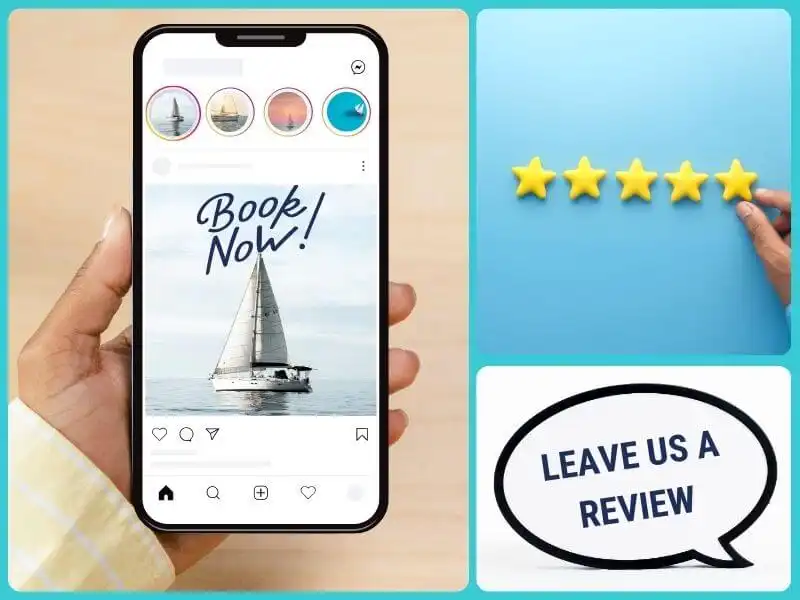
6. Social media and reviews – the key to trust and more bookings
When people plan to book a boat, they want to be sure they are making the right decision.
Recommendations and reviews are often crucial, as potential guests trust real experiences, much more than advertisements.
Social media and reviews provide social proof – the more positive experiences you share, the more trust visitors will have in your offer.
How to use social proof and connect it to your website:
- Display reviews directly on the site – People want to see real impressions from other guests. Include reviews, preferably with names and photos.
- Connect your Instagram feed to your website – Instagram is great for building trust and showcasing real moments. Integrate your profile feed directly into the website (of course, it’s also important to post regularly on Instagram).
- Encourage guests to share their experiences – After check-out, send a short message or email and ask guests for a review. Offer a small incentive, such as a discount on their next rental or free additional equipment.
- Actively respond to comments and reviews – Don’t just collect reviews – respond to them. Thank guests for positive feedback and professionally address negative comments. This shows that you care about them and their experience.
Since people mostly look for proof – show them that others have already had a great experience with you.
Quality reviews, authentic images, and communication can make a huge difference. Be present where your guests are and make their decision easier.
7. Automation and tracking results – how to know what works and what doesn’t?
You can have the most beautiful website and an excellent offer, but if you don’t track data, you won’t know what actually brings results.
Without clear numbers, all decisions are just guesses. Tracking and automation allow you to see what works, what needs improvement, and how to increase bookings.
Which tools to use for tracking and optimization:
- Google Analytics – Tracks traffic sources, user behavior, and conversions. How many people visit your site? From which channels – Google search, social media, or ads? How long do they stay, and on which pages do they exit? This information helps you understand what interests visitors and where you might be losing potential clients.
- Hotjar – Displays heatmaps and records user behavior. Where do users click? Which sections interest them the most? If you notice they leave the site before submitting an inquiry, the issue might be a long contact form or unclear CTAs.
- CRM systems (Customer Relationship Management) – Automated tracking of inquiries and client communication. If you receive a lot of inquiries via email, WhatsApp, and social media, a CRM system allows you to keep everything in one place, track follow-up messages, and avoid losing potential bookings.
- Google Tag Manager – Installs and manages various tracking codes without the need for manual programming. It enables detailed tracking of user actions, such as how many people click on "Request a quote" or "Check availability."
- Meta (Facebook) Pixel – Tracks users who have visited your site and enables precise ad targeting. If someone views a boat offer but doesn’t send an inquiry, you can later show them a remarketing ad with a discount or a special offer.
How to use this data for better results:
- Identify which channels generate the most inquiries – If most visitors come from Google search but don’t send inquiries, you might need to improve your CTA buttons or contact form. If social media ads bring a lot of clicks but few bookings, the targeting may not be right.
- Find and eliminate weak points – If users leave the site at a specific section, the issue might be slow loading, poor navigation, or a lack of clear information.
- Test – A/B testing allows you to compare different versions of a webpage, titles, images, or CTA buttons and see which version performs better.
Optimization requires ongoing maintenance and refinement – it’s a continuous improvement process based on data.
When you know what works, you can invest in the right things, reduce ad costs, and increase bookings.
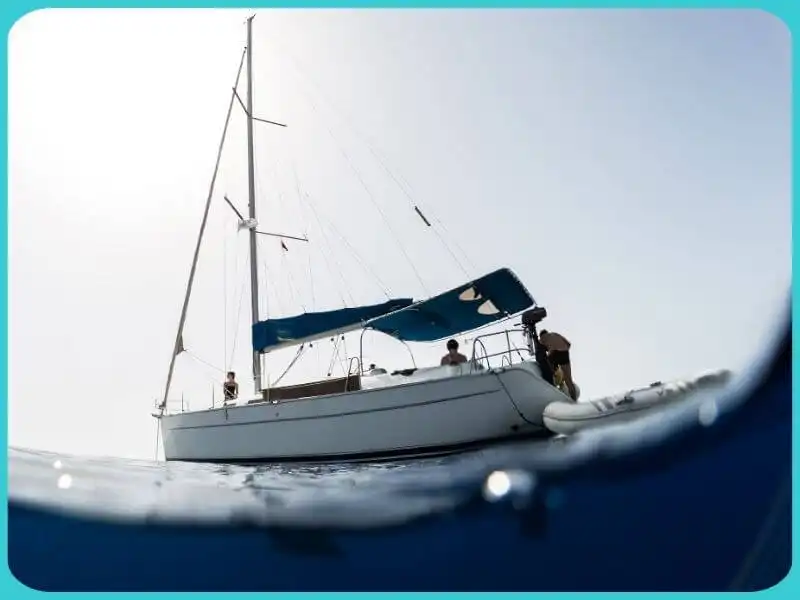
Think like a guest – not like an owner
At the end of the day, your website is not there for you – it’s there for your guests.
As we’ve already mentioned, they’re not just looking for a boat, but for an experience. They don’t want to struggle with a slow website, endless text, and unclear options – they want quick solutions, clear information, and a simple booking process.
So ask yourself: If I were a potential guest, would I send an inquiry on my own website? Would it convince me to book?
If the answer is “no” or “maybe,” it’s time to make a change.
Everything you’ve read is easy to apply – and the results can be significant.
Don’t leave your guests guessing. Guide them through the process, show them why you are the best choice, and make it easier for them to decide.
Because every click that doesn’t end in an inquiry has probably gone to the competition.
Your website is your strongest sales tool.
Don’t let slow design, poor navigation, and unclear CTAs drive guests to competitor sites.
Contact us today and turn your website into a sales channel that generates more inquiries and bookings.
Categories of trends
- News
- Sale
- Marketing
- SEO
- Web design
- Social media
- Technology
- Regulations
- Management
- Education
- Finances
- User experience
Newsletter
Sign up for the newsletter and receive the latest trends and tips straight to your inbox



